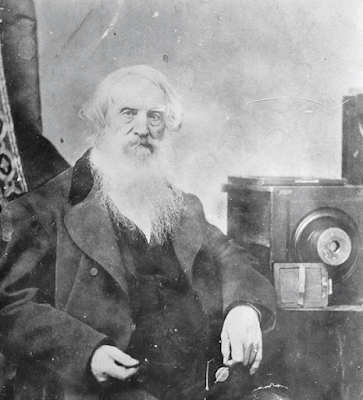On This Date In History
On January 6, 1838, Samuel Morse’s telegraph system is demonstrated for the first time at the Speedwell Iron Works in Morristown, New Jersey. The telegraph, a device which used electric impulses to transmit encoded messages over a wire, would eventually revolutionize long-distance communication, reaching the height of its popularity in the 1920s and 1930s.
Samuel Finley Breese Morse was born April 27, 1791, in Charlestown, Massachusetts. He attended Yale University, where he was interested in art, as well as electricity, still in its infancy at the time. After college, Morse became a painter. In 1832, while sailing home from Europe, he heard about the newly discovered electromagnet and came up with an idea for an electric telegraph. He had no idea that other inventors were already at work on the concept.
Morse spent the next several years developing a prototype and took on two partners, Leonard Gale and Alfred Vail, to help him. In 1838, he demonstrated his invention using Morse code, in which dots and dashes represented letters and numbers. In 1843, Morse finally convinced a skeptical Congress to fund the construction of the first telegraph line in the United States, from Washington, D.C., to Baltimore. In May 1844, Morse sent the first official telegram over the line, with the message: “What hath God wrought!”
Over the next few years, private companies, using Morse’s patent, set up telegraph lines around the Northeast. In 1851, the New York and Mississippi Valley Printing Telegraph Company was founded; it would later change its name to Western Union. In 1861, Western Union finished the first transcontinental line across the United States. Five years later, the first successful permanent line across the Atlantic Ocean was constructed and by the end of the century telegraph systems were in place in Africa, Asia and Australia.
Because telegraph companies typically charged by the word, telegrams became known for their succinct prose, whether they contained happy or sad news. The word “stop,” which was free, was used in place of a period, for which there was a charge. In 1933, Western Union introduced singing telegrams. During World War II, Americans came to dread the sight of Western Union couriers because the military used telegrams to inform families about soldiers’ deaths.
Over the course of the 20th century, telegraph messages were largely replaced by cheap long-distance phone service, faxes and email. Western Union delivered its final telegram in January 2006.
Samuel Morse died wealthy and famous in New York City on April 2, 1872, at age 80.
On January 6, 1912, New Mexico is admitted into the United States as the 47th state.
Spanish explorers passed through the area that would become New Mexico in the early 16th century, encountering the well-preserved remains of a 13th-century Pueblo civilization. Exaggerated rumors about the hidden riches of these Pueblo cities encouraged the first full-scale Spanish expedition into New Mexico, led by Francisco Vasquez de Coronado in 1540. Instead of encountering the long-departed Pueblo people, the Spanish explorers met other Indigenous groups, like the Apaches, who were fiercely resistant to the early Spanish missions and ranches in the area.
In 1609, Pedro de Peralta was made governor of the “Kingdom and Provinces of New Mexico,” and a year later he founded its capital at Santa Fe. In the late 17th century, Apache opposition to Spain’s colonial efforts briefly drove the Spanish out of New Mexico, but within a few decades they had returned. During the 18th century, the colonists expanded their ranching efforts and made attempts at farming and mining in the region.
When Mexico achieved its independence from Spain in 1821, New Mexico became a province of Mexico, and trade was opened with the United States. In the next year, American settlers began arriving in New Mexico via the Santa Fe Trail. In 1846, the Mexican-American War erupted, and U.S. General Stephen W. Kearny captured and occupied Santa Fe without significant Mexican opposition. Two years later, the Treaty of Guadalupe Hidalgo ceded New Mexico to the United States, and in 1853 the territory was expanded to its present size through the Gadsden Purchase.
The Apache and the Navaho resisted the colonial efforts of the U.S. as they had those of Spain and Mexico, and after three decades of bloodshed, Indian resistance finally ended with the surrender of Geronimo, chief of the Chiricahua Apaches, in 1886. After the suppression of New Mexico’s natives, the population of New Mexico expanded considerably, and many came to participate in the ranching boom brought on by the opening of the Santa Fe Railroad in 1879. In 1912, New Mexico was granted statehood.
Map of the later Arizona and New Mexico Territories, split from the original New Mexico Territory of 1851, showing existing counties.











No comments:
Post a Comment